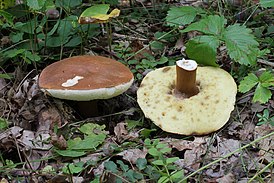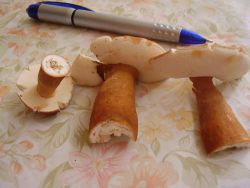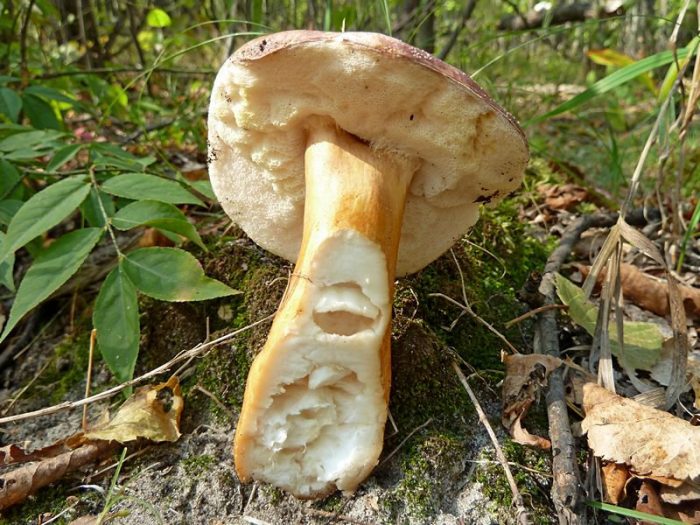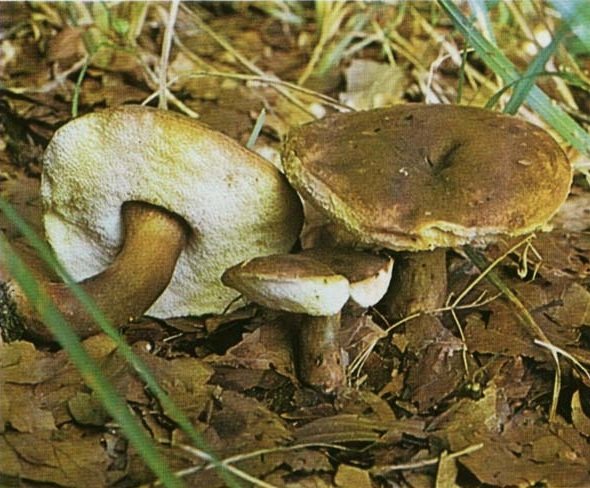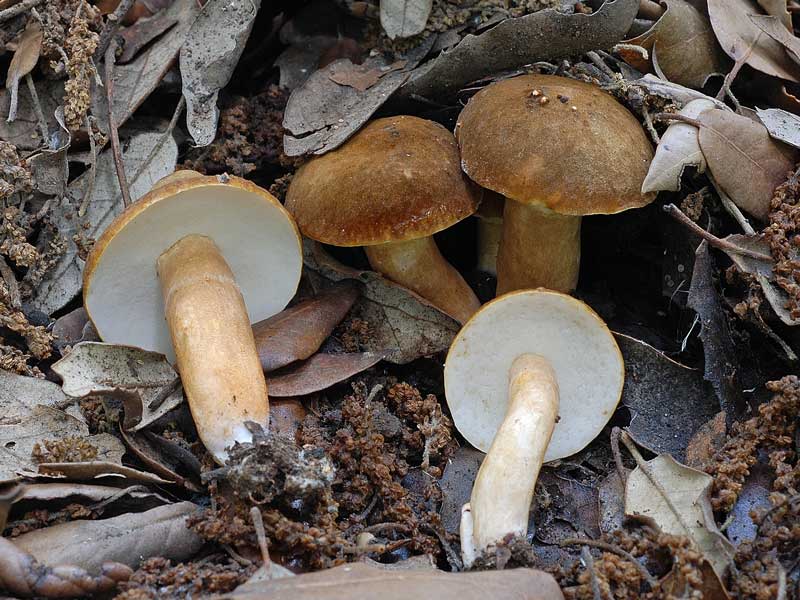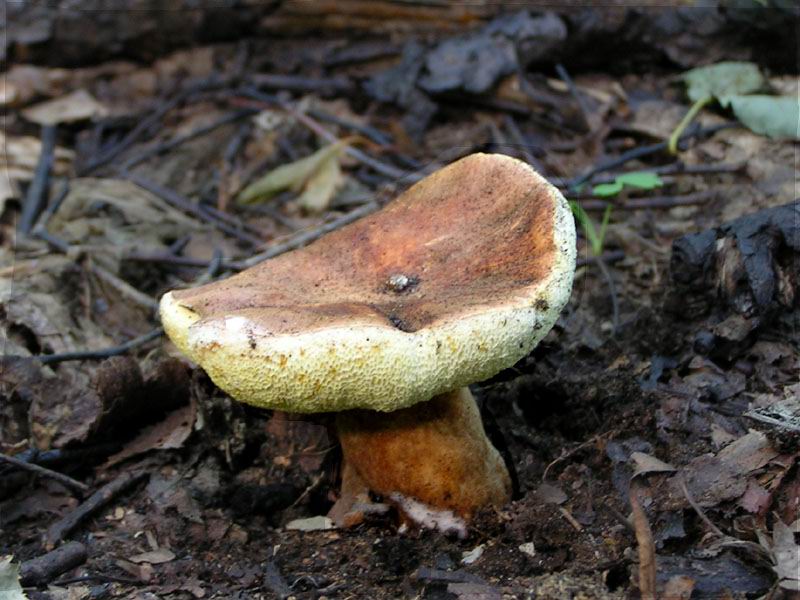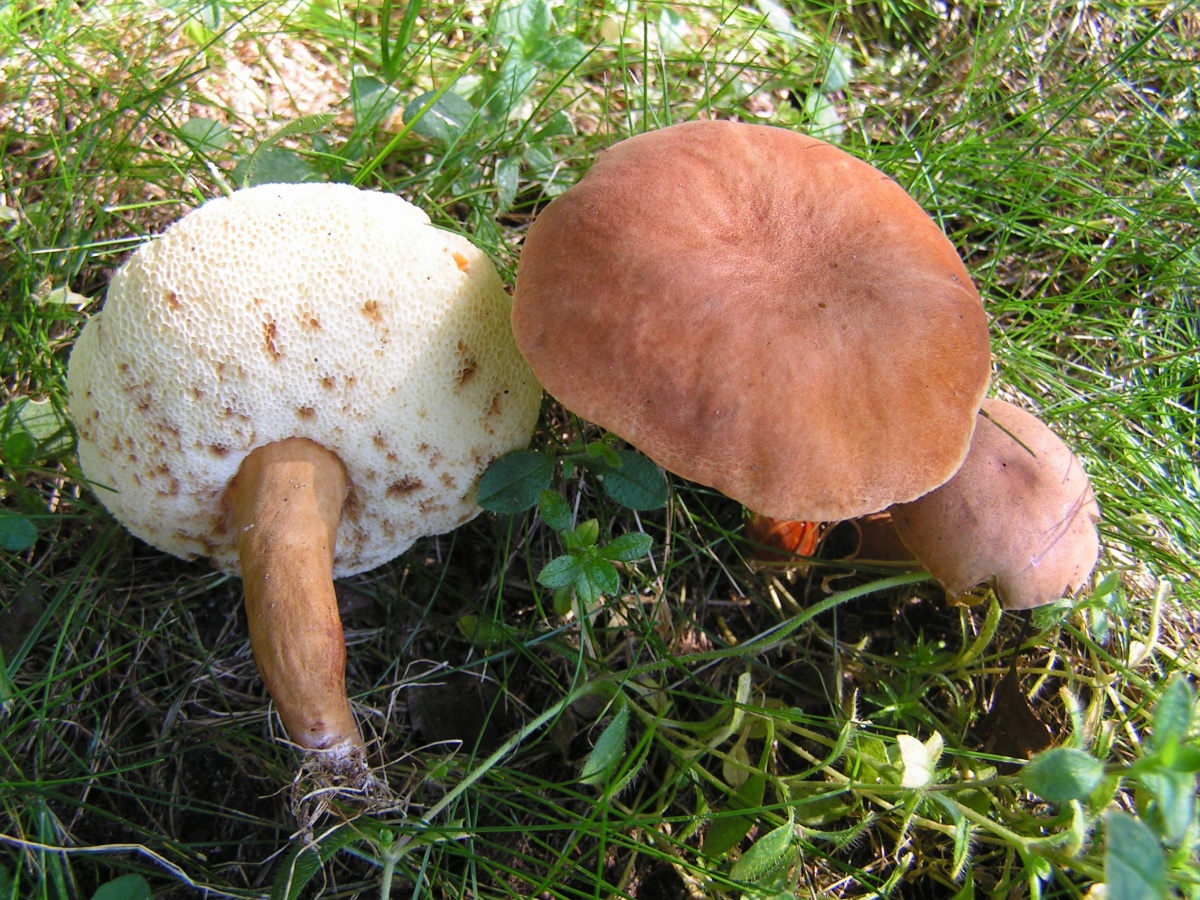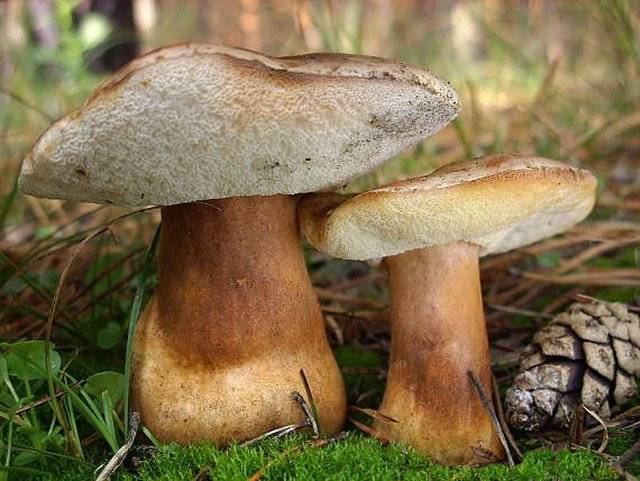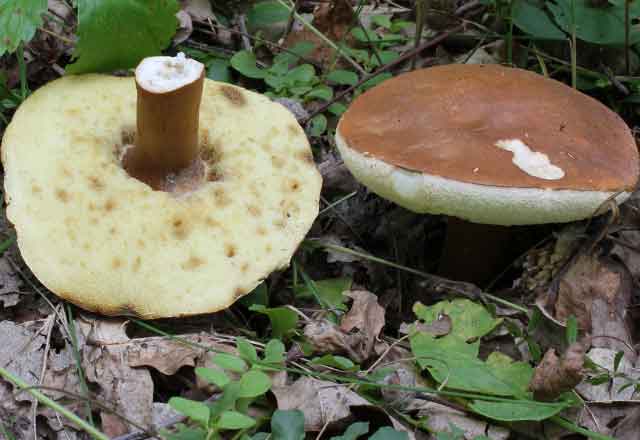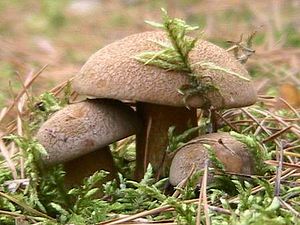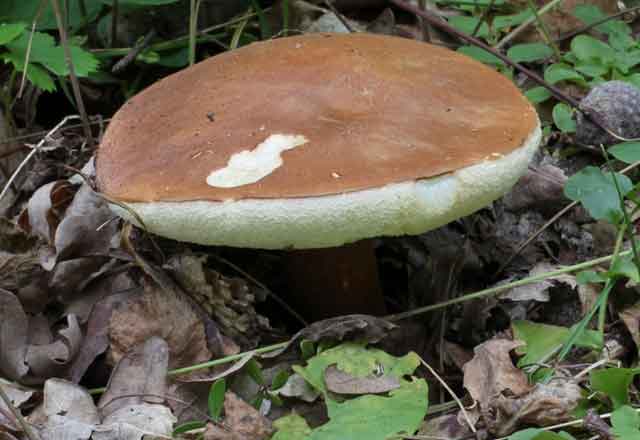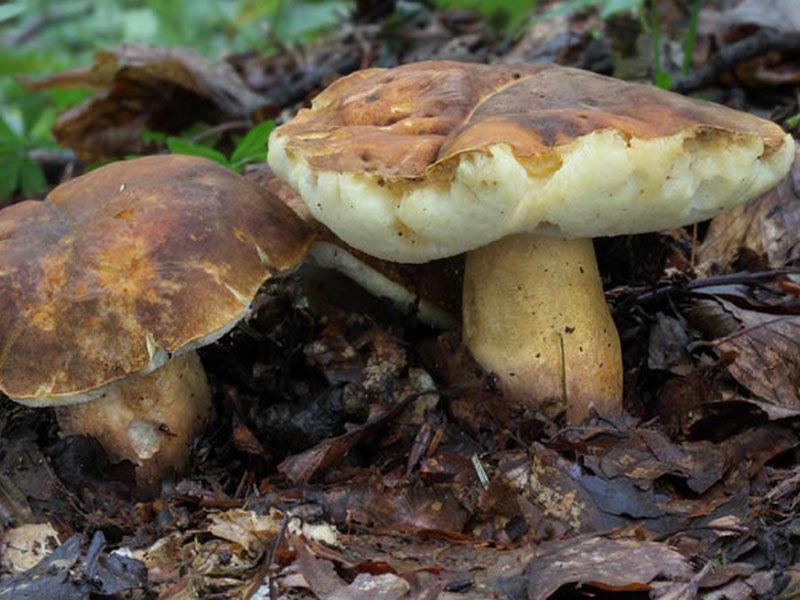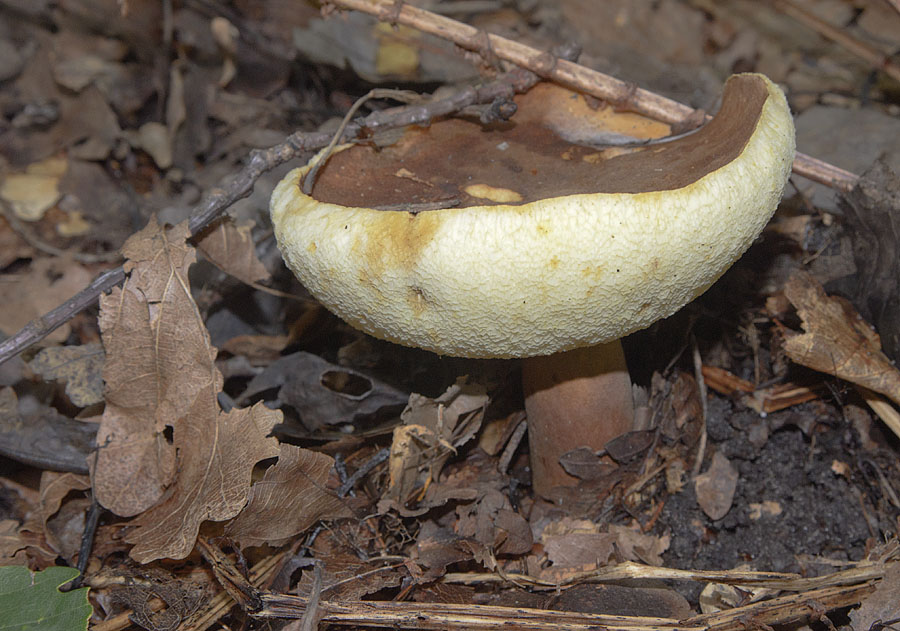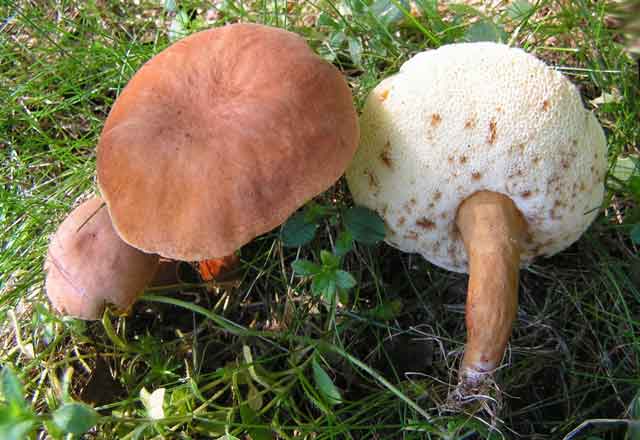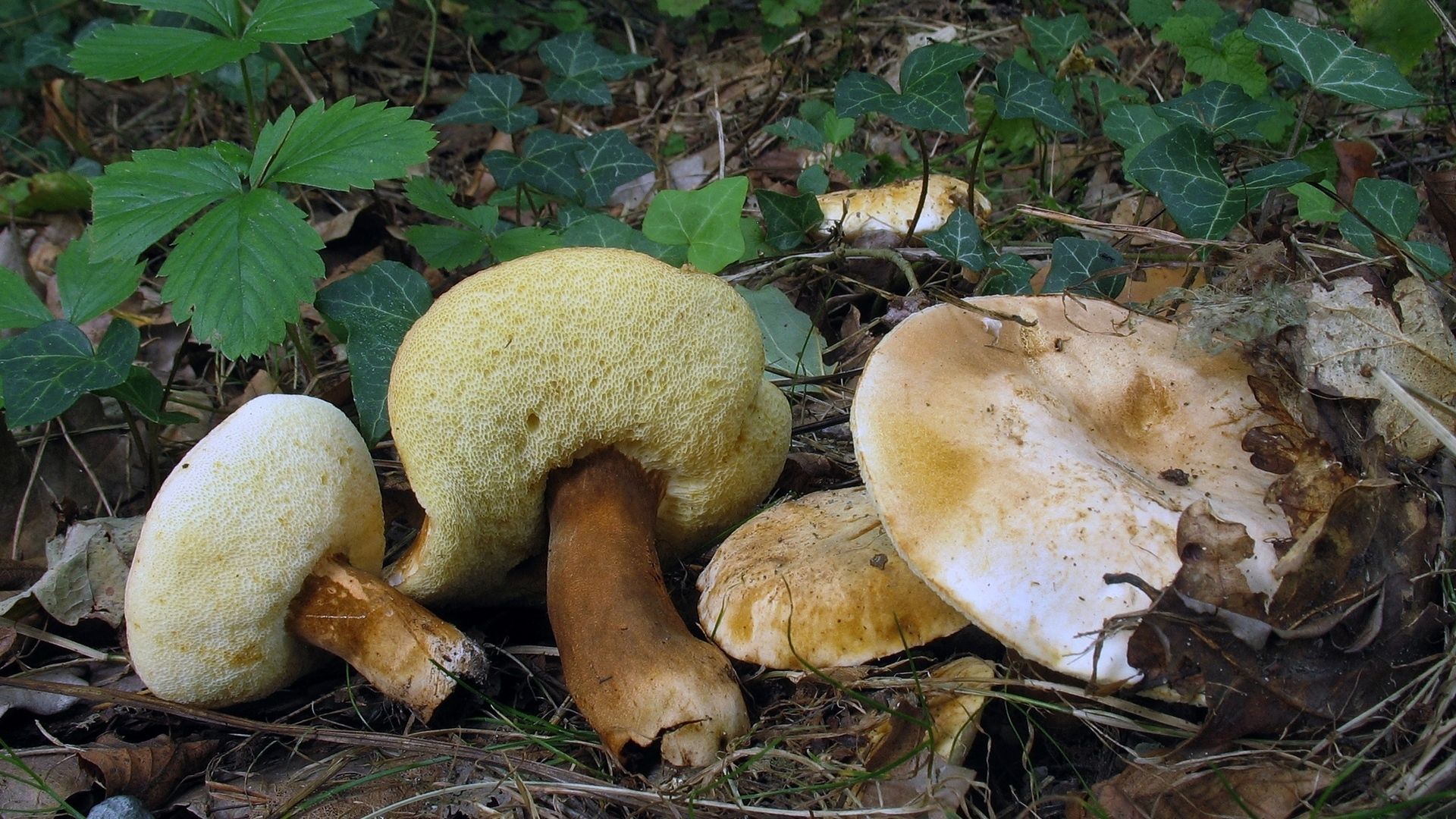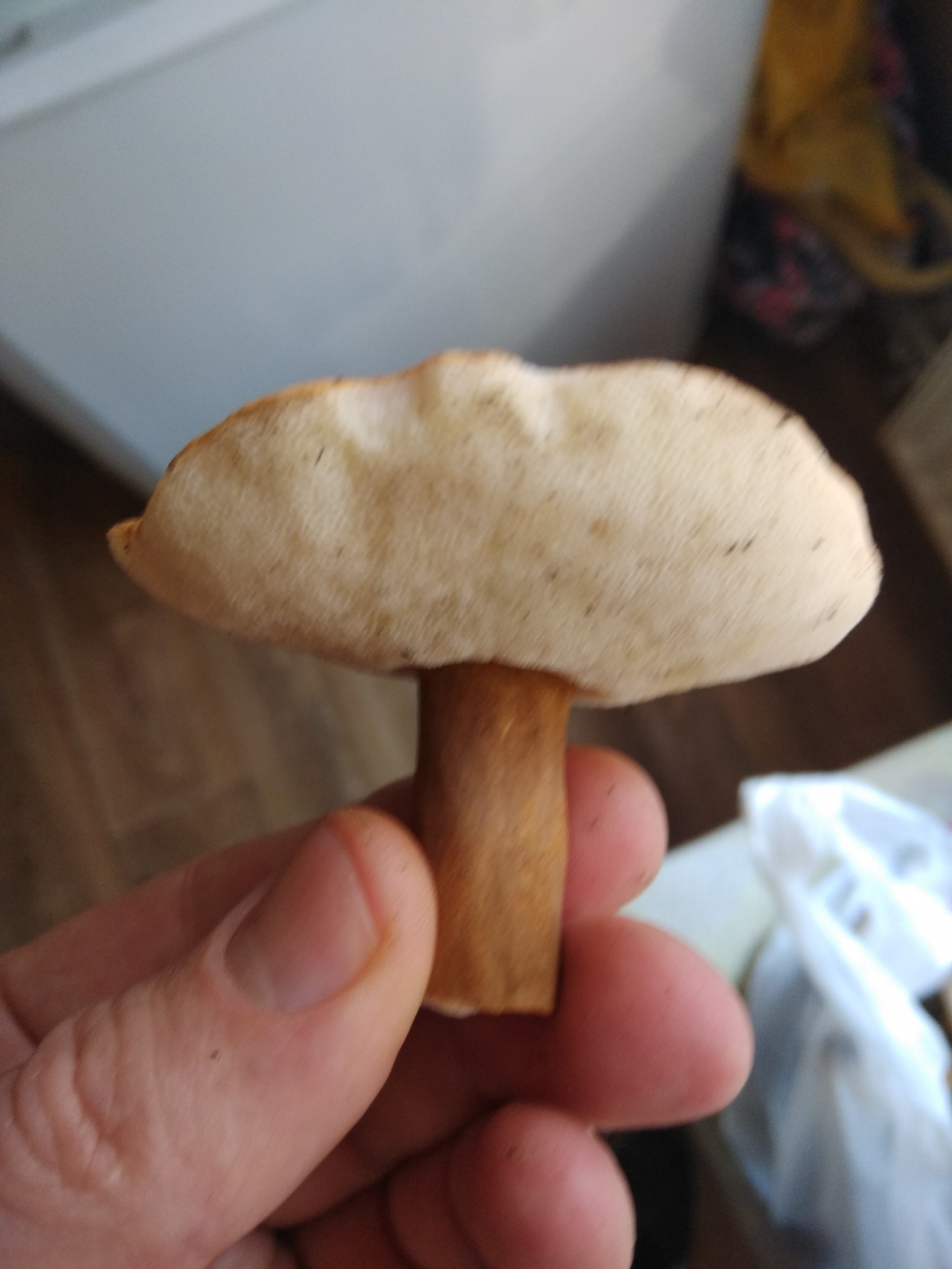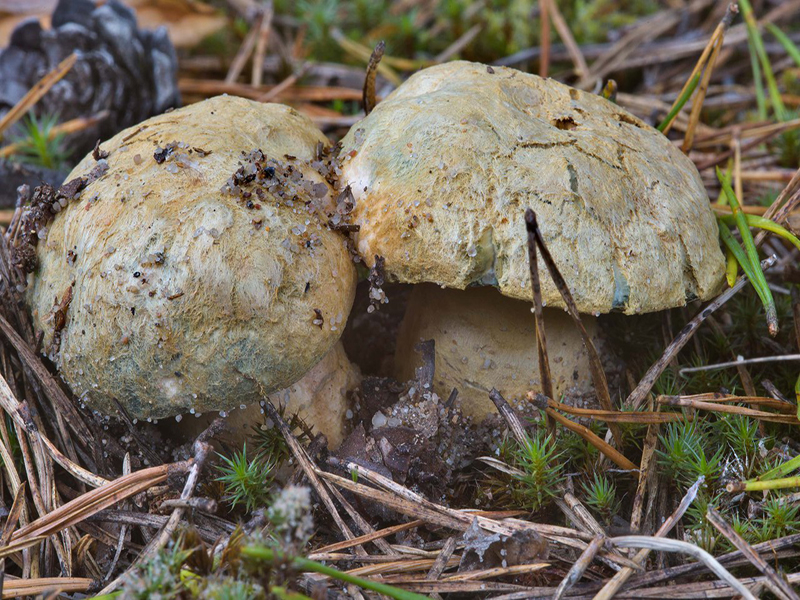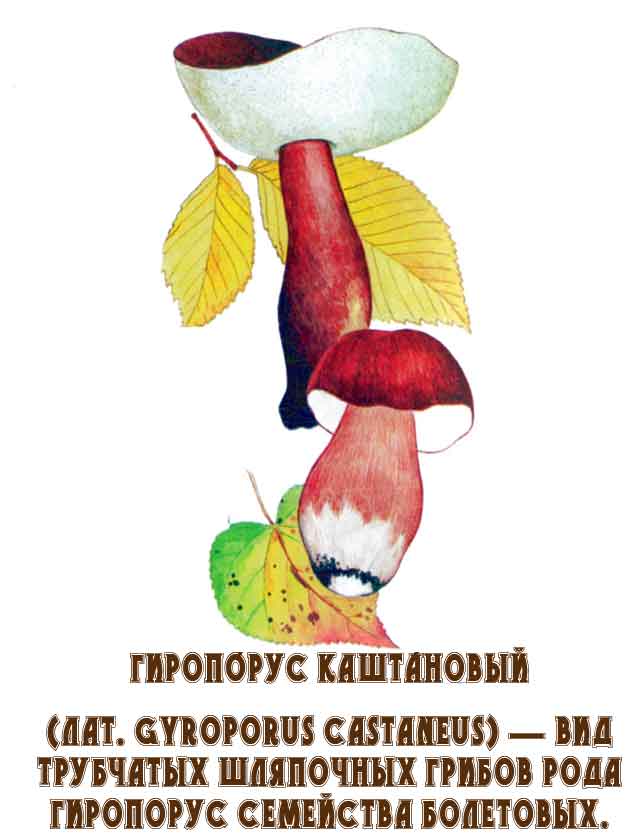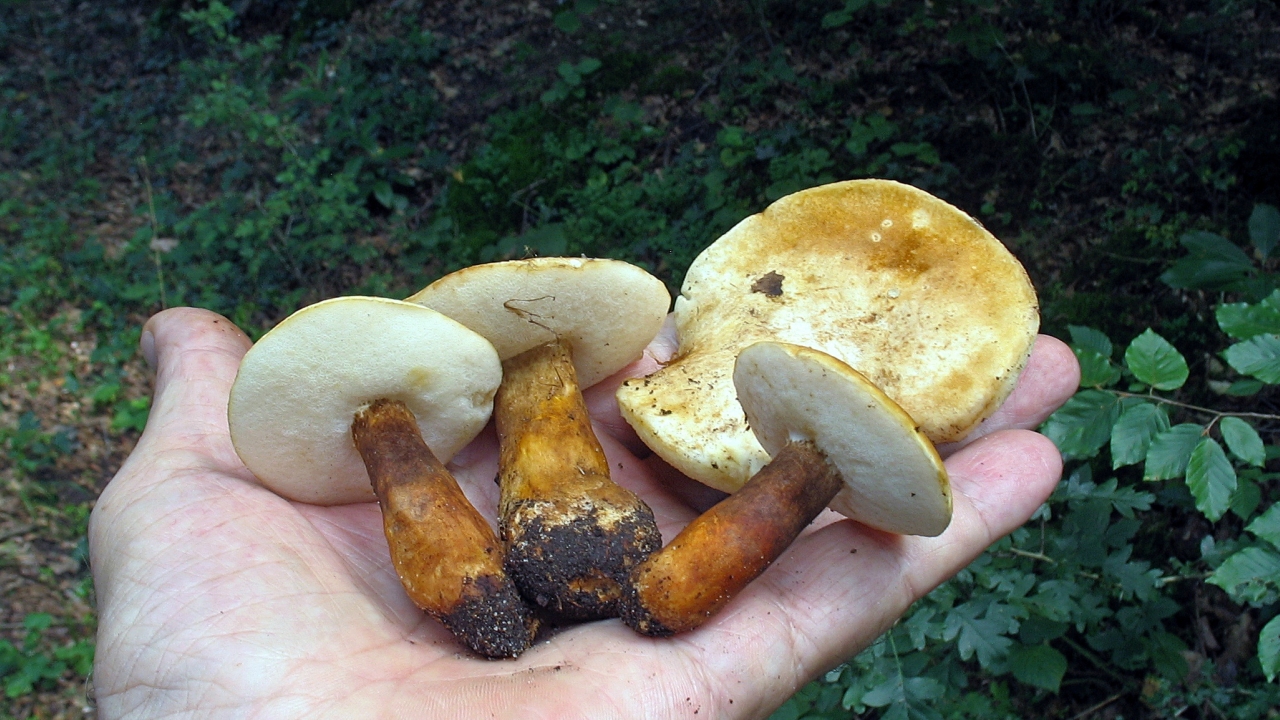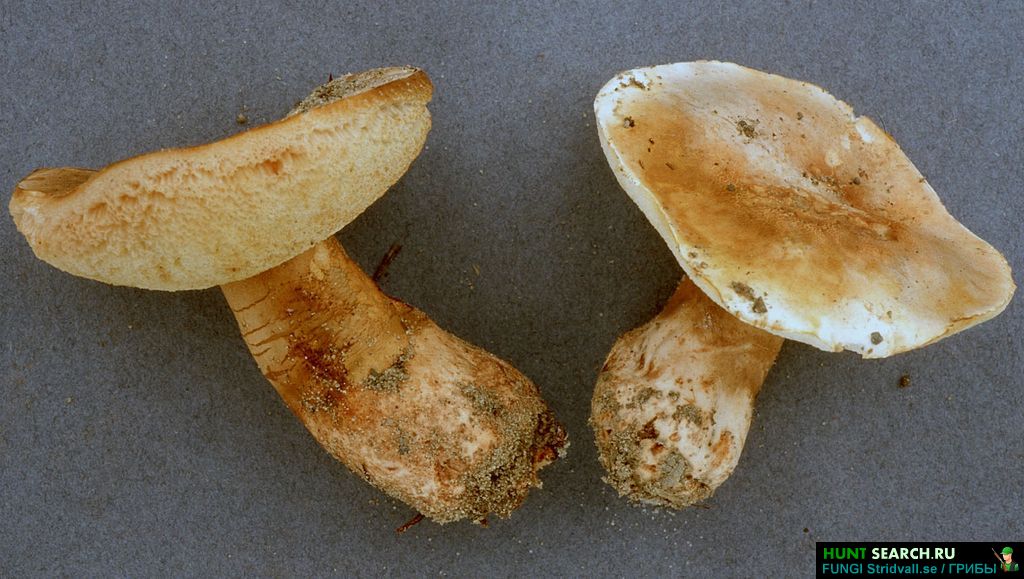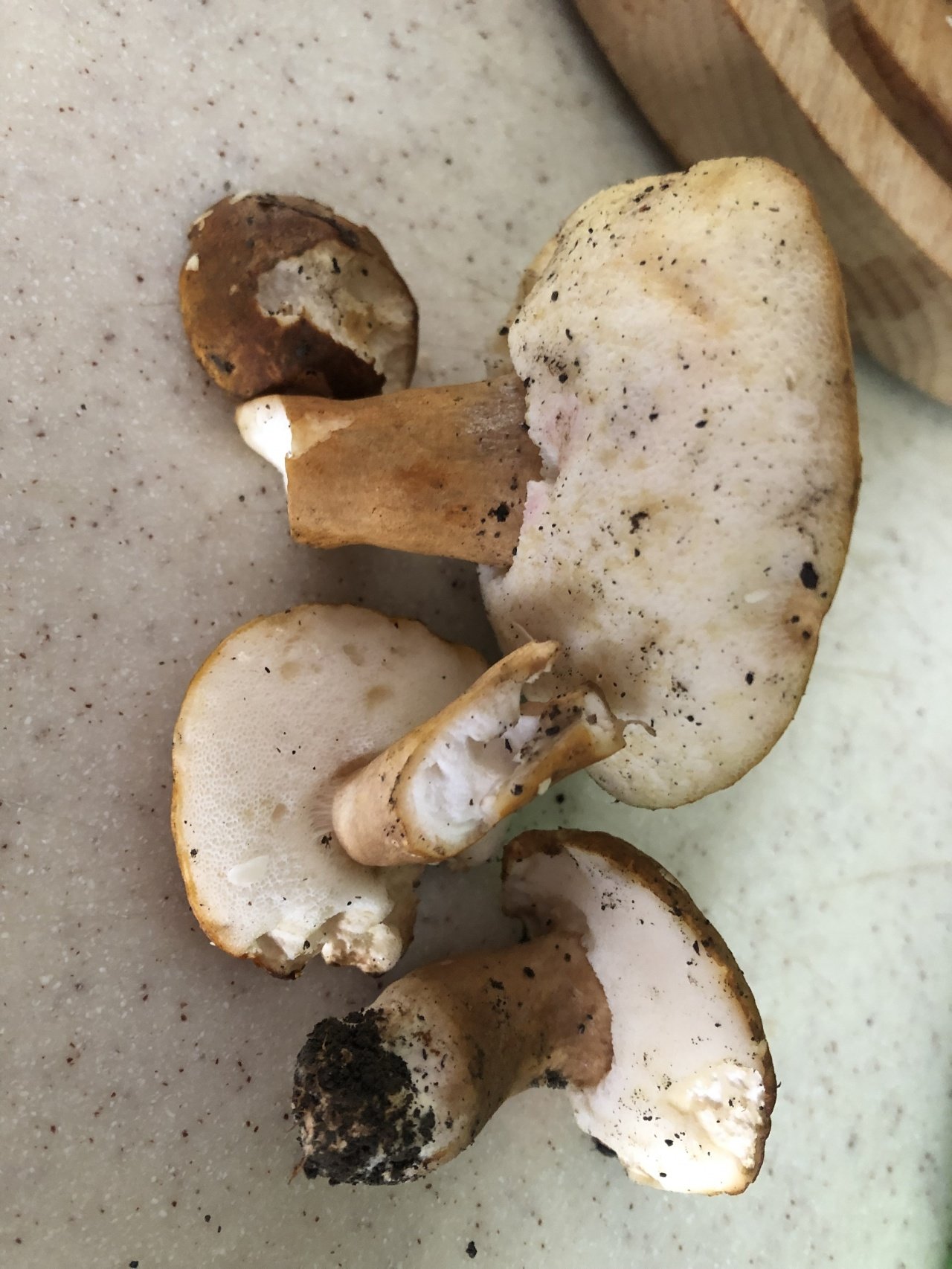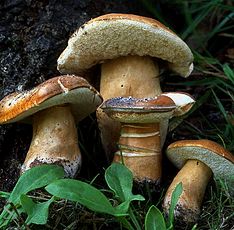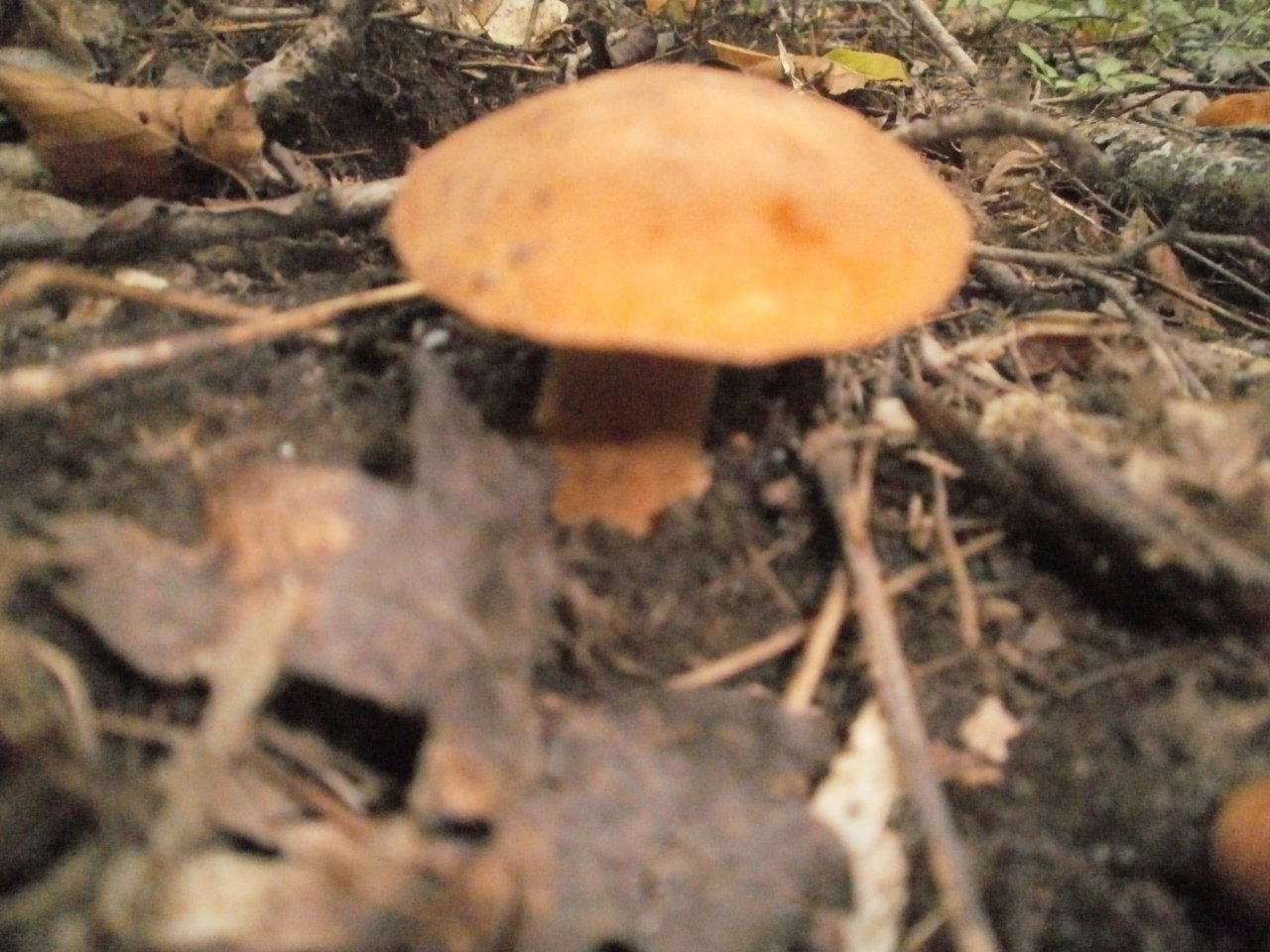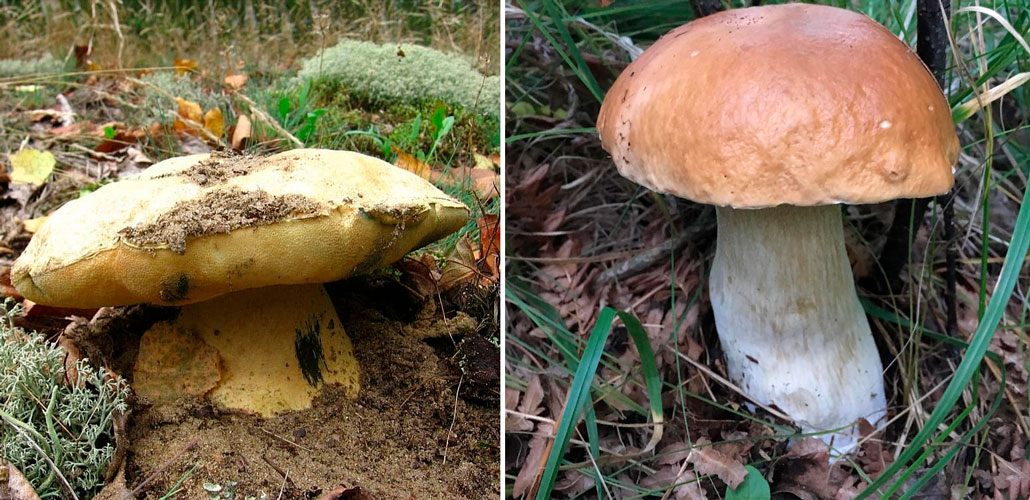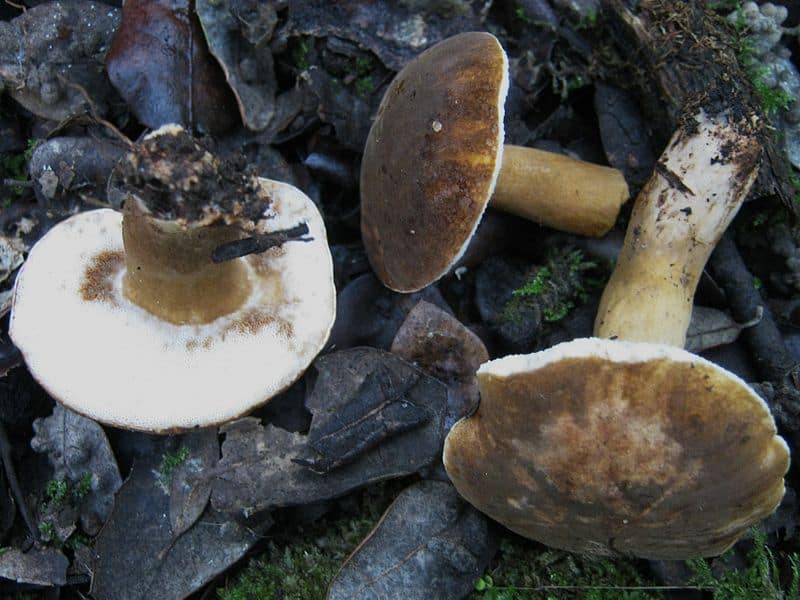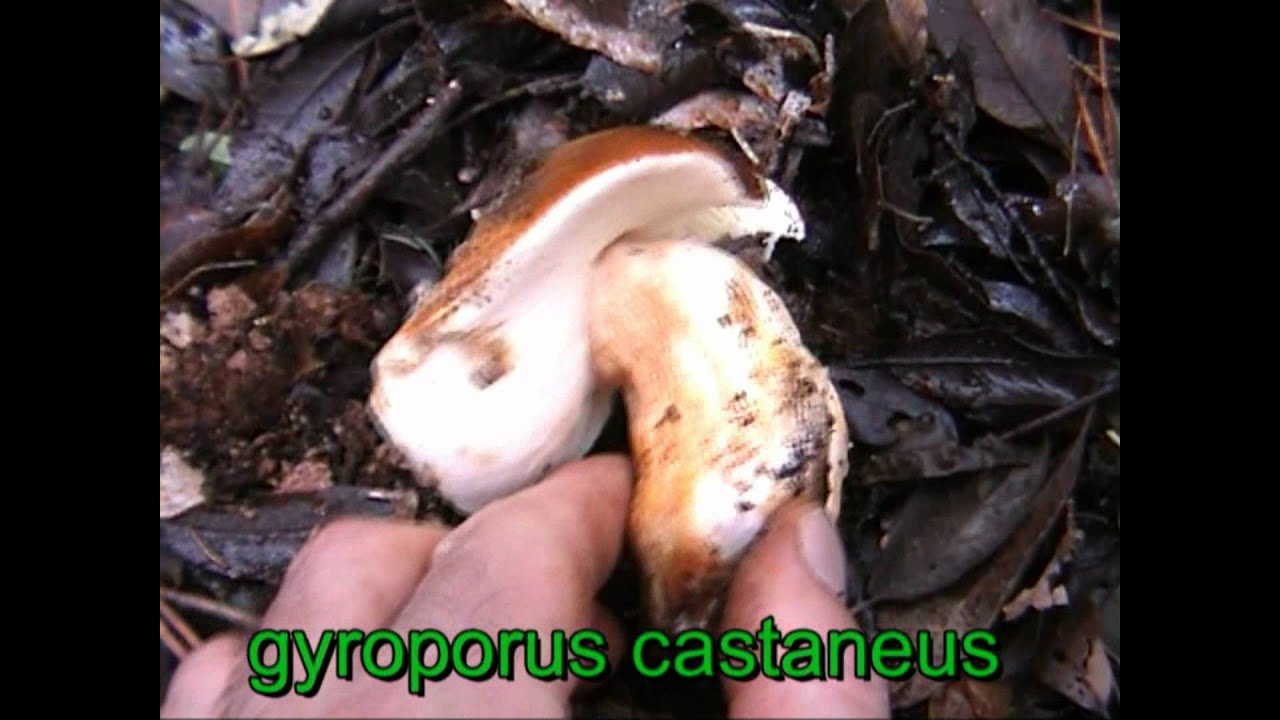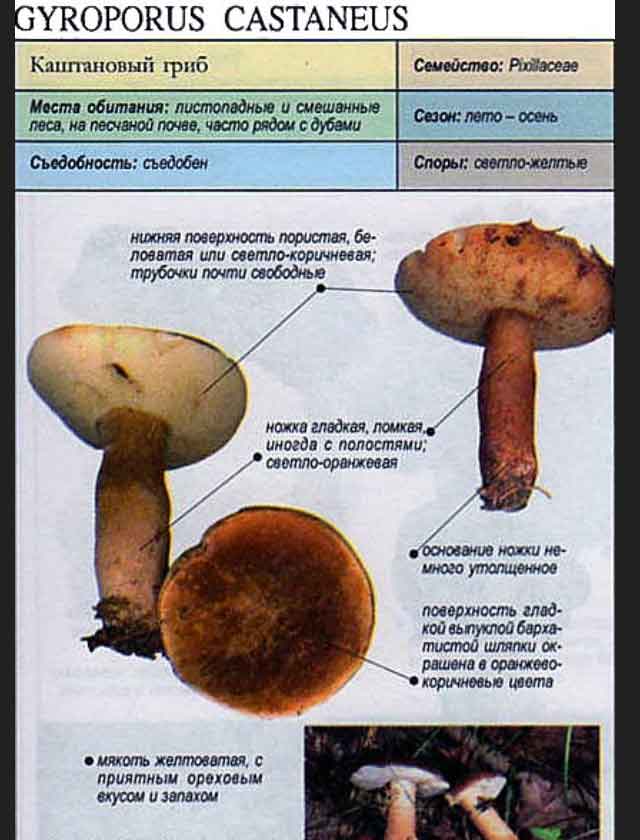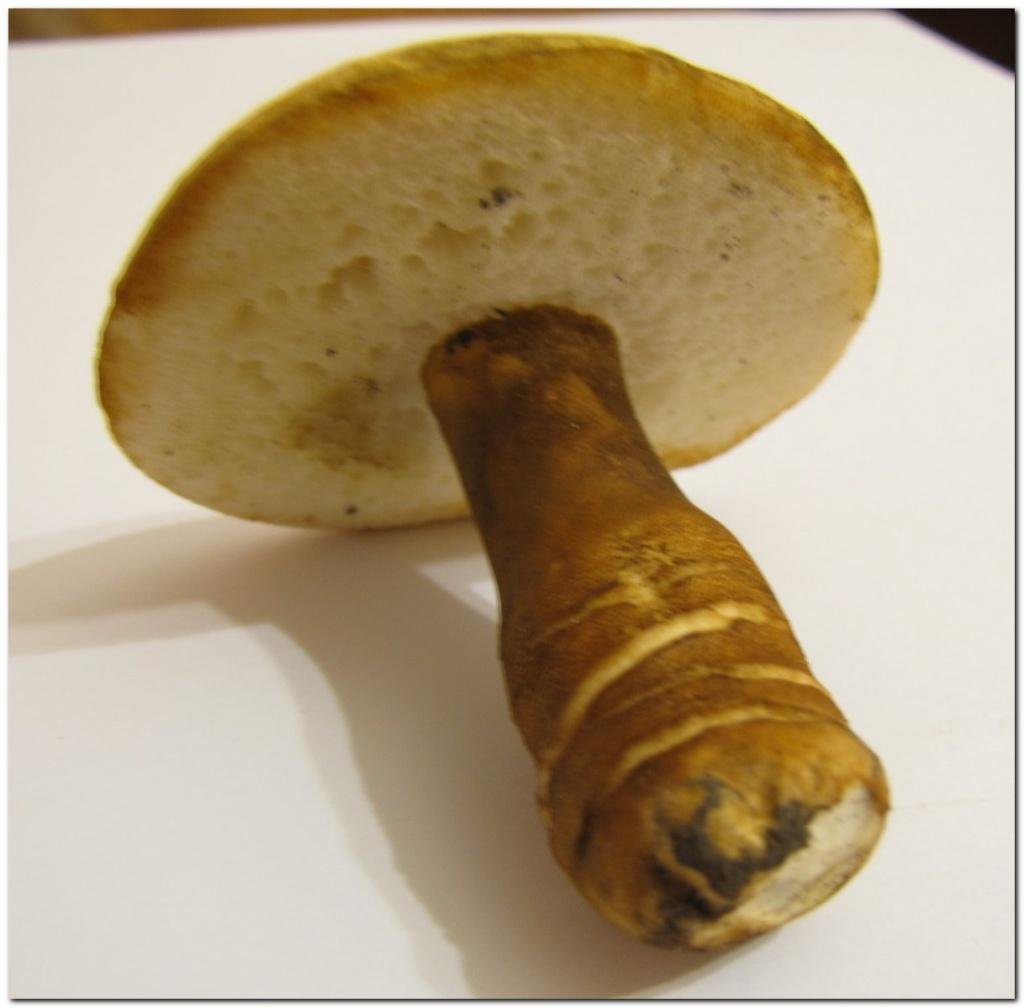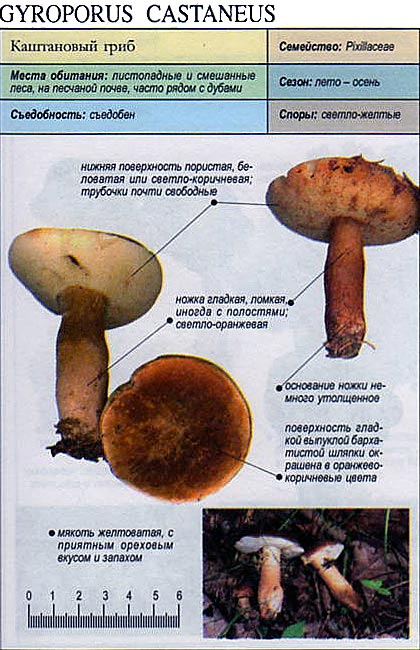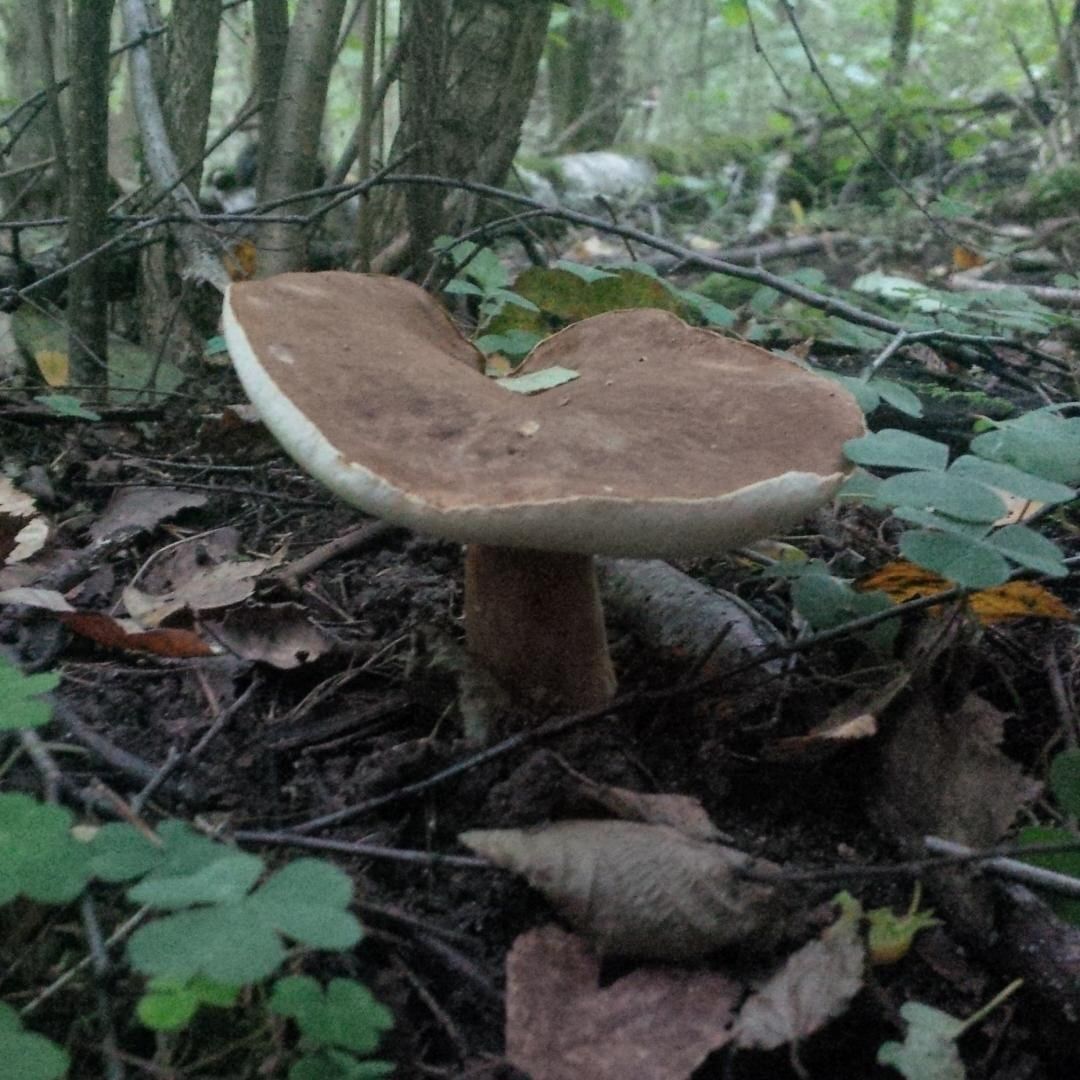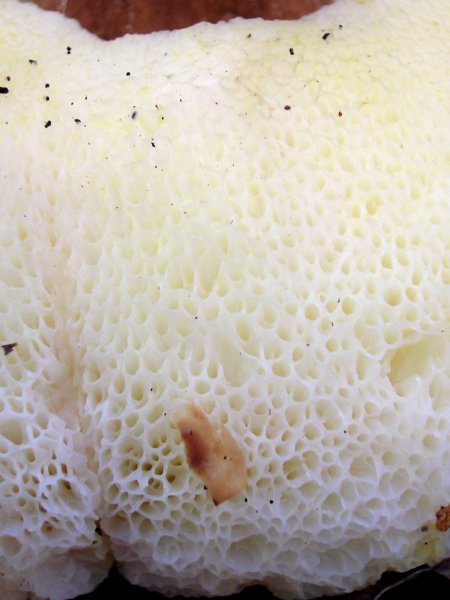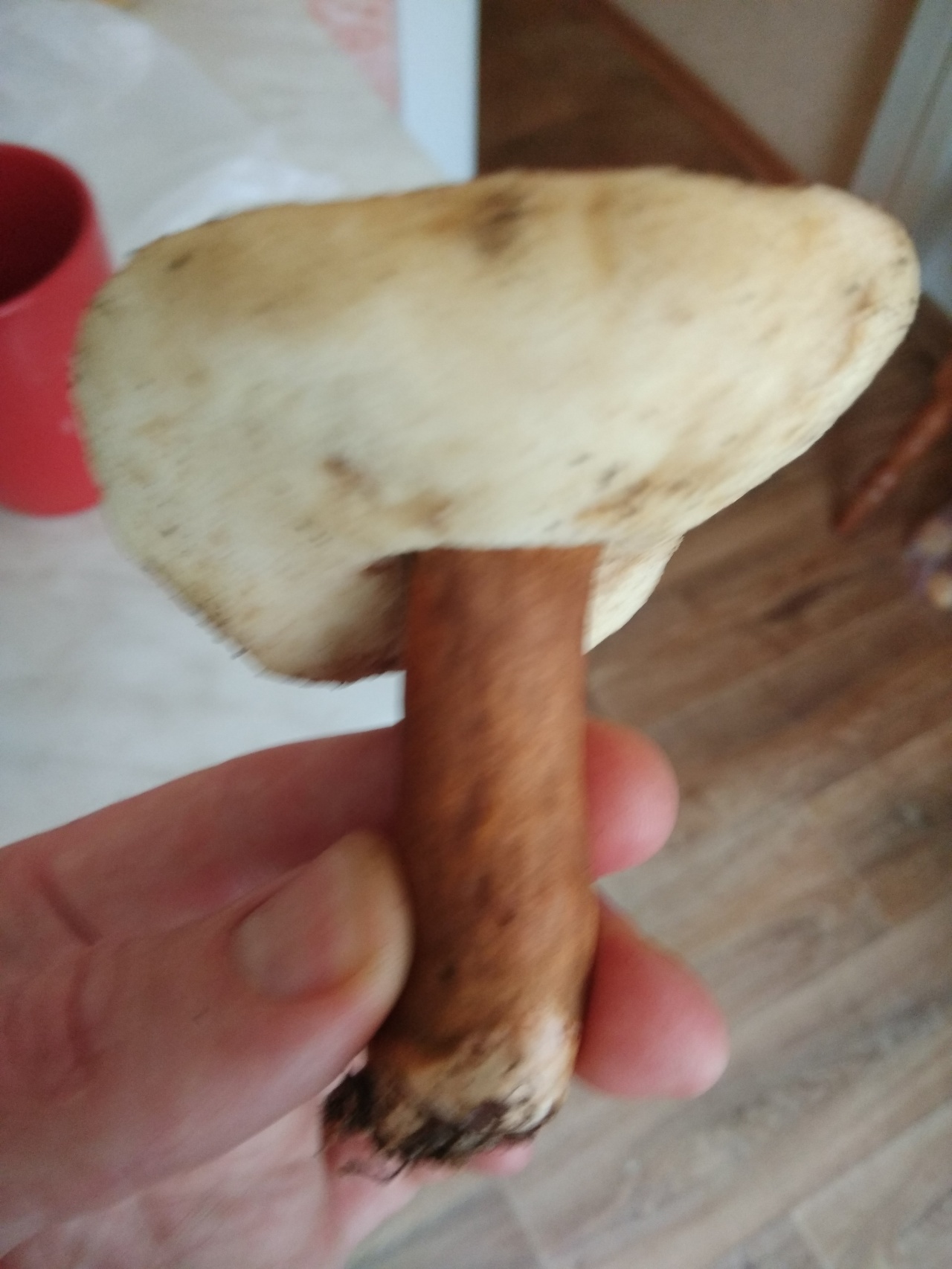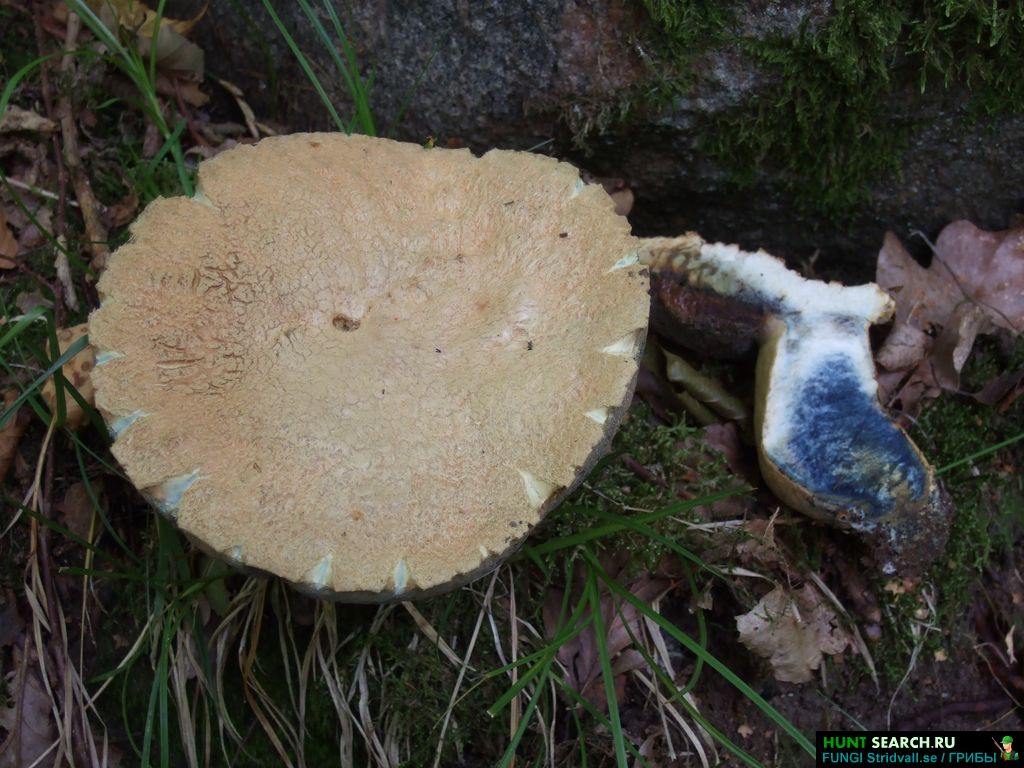Description of the mushroom
Chestnut is a tubular, cap mushroom. Belongs to the Boletov family, the Gyroporus genus. Sizes are larger than average.
It is called chestnut because it prefers to grow near broad-leaved trees, which include chestnut, beech and oak, and also has a color similar to the color of these trees. The name "hare mushroom" stuck because of the love of these animals to taste it.
Often the chestnut grows in symbiosis with trees, but it can do without them.
Hat

It has a convex shape, it can have various shades of brown, go into red or light brown. Velvety, dry or smooth to the touch. Older specimens have fewer villi on the cap than young ones. It can become covered with cracks - it directly depends on the weather conditions. The edges of the cap are folded upward, revealing a hymenophore of this type.
Hymenophore
The tubules at the bottom are white, yellowish or cream-colored. A yellow tint indicates that the chestnut is ripe. If you press, the color will change to dark brown. Over time, the tubular layer becomes loose and easily lags behind the stem. The tubules contain light yellow small round spores.
Pulp
The chestnut tree has a fleshy white flesh that later darkens. When broken, the color does not change. In ripe mushrooms, it is more fragile, in old ones it is hard and dry.
Leg
It has a cylindrical shape, slightly thickens towards the bottom. Its length can be no more than 8 cm, and the color is similar to the color of the cap. Slightly flattened on the sides. The leg changes with the age of the mushroom: at first it looks like cotton, and by old age it becomes empty inside.
The leg of this species has a peculiarity - having cut off the mushroom, it is impossible to see the darkening characteristic of many other representatives of the mushroom kingdom on it. The cut remains the same color.
Gyroporus chestnut
Another representative of the gyroporus family. Belongs to the department of basidiomycetes, forged agaricomycetes. Genus: gyroporus.
Hat
The cap of this mushroom has a characteristic rusty hue with brown spots. Less often it is red-brown. Even less often chestnut shade. The younger the mushroom, the lighter its cap, but with age it becomes darker. The diameter of the mushroom reaches 11 cm. The surface of this mushroom, if you run your hand over it, is quite velvety. Also a little fluffy. Less often, it is naked and without a single villi. If the sun's rays hit directly on the cap of the mushroom, it begins to crack. If you look under the cap, then the tubes inside are first white, then they acquire a yellow tint. As for the older age, the cap becomes less elastic and drier.
Pulp
Special attention is paid to the pulp. It is quite white, and at the same time tries not to change its color at the cut
At first, it is quite hard, while fleshy. However, it becomes more fragile with age. At the same time, her smell and taste are quite unpleasant, so many people prefer to bypass the chestnut side of gyroporus.
Leg
The leg is quite stable. It is unevenly cylindrical, but at the same time, it can bend at any angle. Clavate and fairly flattened. Dry, up to 30 mm in height. The thickness is the same. Inside, the leg is quite elastic, but with age, this elasticity is commensurately lost. Often, the cap outweighs the leg and breaks it off.
Where to grow and when to go
If you are looking to find Chestnut Gyroporus, you are very lucky. This mushroom is especially widespread in the central territory of Russia. It grows immediately as a large brood, therefore, having spotted it in a clearing, know that there are probably many of its fellows around.
This mushroom grows from July to right until November, but on condition that the autumn is warm.If it is cold, then you need to go for the mushroom at the end of September and beginning of October.
Prefers coniferous and deciduous forests for growth. Also, predominantly prefers sandy soils, cut wet. Loves dry soils, settles away from swamps.
Fruiting bodies are somewhat widespread from each other, however, they are nevertheless grouped well. In one glade, you can find up to thirty mushrooms at a time.
Edible Gyroporus chestnut
Many people say that chestnut gyroporus is much worse in its taste characteristics, in contrast to blue gyroporus. This is indeed the case. Despite the fact that this mushroom is edible, it still has a very specific taste.
First, you smell the mushrooms, and then it takes on a bitter tint. Even after heat treatment, this mushroom cannot be eaten. At some point, it becomes so bitter that there is nothing to do but throw it away. Also, he can impregnate absolutely all the ingredients that were prepared with him with bitterness. For example, if gyroporus is mistakenly baked with potatoes, the potatoes will also become very bitter.
Therefore, it is predominantly better to use such a mushroom as a seasoning. Indeed, a slight bitterness will not hurt some people, and in general, this mushroom perfectly replaces pepper, it becomes more aromatic.
To prepare the seasoning, you must perform a number of the following actions.
To begin with, the mushroom is washed well under running water.
All trash is removed. The mushroom is dried well and cut into several pieces. Then boil in boiling water for about 10 minutes. The mushroom is salted again and then carefully placed on baking paper on a baking sheet. The temperature in the oven is set at 60 to 70 degrees. Mushrooms go there for one and a half to two hours.
However, check readiness periodically. To do this, you need to take a piece of the mushroom in your hands and try to break it. As soon as this happens with a crunch, it means that the drying cycle is over. Now you need to let the mushrooms cool down at room temperature. However, try not to get wet around. Once the mushroom has cooled down, we suggest grinding it in a coffee grinder. Done, delicious and bitter seasoning will decorate any of your dishes.
Description
Chestnut mushroom or chestnut gyroporus (Gyroporus castaneus) is edible, has synonymous names chestnut, hare mushroom.
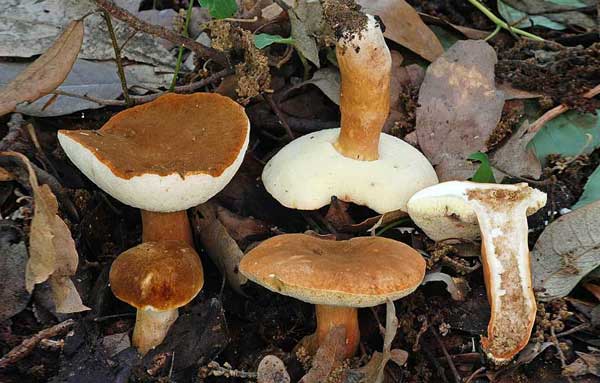
The species is characterized by the following features:
- orange-brown, chestnut, reddish-brown velvety cap with a minimum diameter of 4 cm and a maximum diameter of 10 cm. The convex shape later becomes flat, and the even edges rise, wrapping the tubular layer upward;
- tubular layer at first adherent, whitish or creamy yellow, tubules with medium pores. In mature mushrooms, it becomes almost free, lagging behind the stem. When pressed, the tubular layer acquires a brownish color;
- spores are light yellow;
- a reddish-brown stem of a cylindrical shape, sometimes eccentric, with a dry surface, at first dense, later looser areas and cavities are formed in it. The largest dimensions of the leg are 8 cm long, 3 cm thick;
- the flesh is yellowish, at the break and cut, the color does not change either in the cap or in the stem, has a weak nutty smell and taste.
Evaluation of taste, medicinal properties, benefits and contraindications
Chestnut is an edible species with a pleasant taste. It belongs to the mushrooms of the second category, that is, it is valuable and nutritious, but it is inferior in taste to the representatives of the first category.
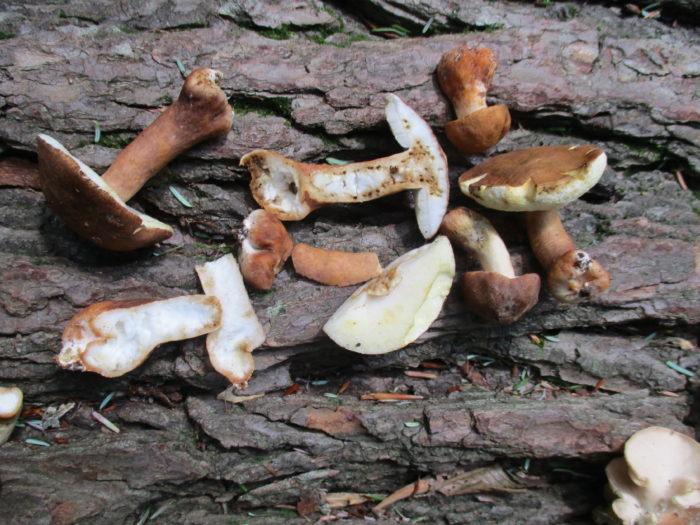 Kashtanovik has a wide range of medicinal properties. The chemical composition contains fiber, vitamins, minerals and natural protein, which makes it very valuable.
Kashtanovik has a wide range of medicinal properties. The chemical composition contains fiber, vitamins, minerals and natural protein, which makes it very valuable.
Positive properties:
- Stabilizes the state of the nervous system.
- Normalizes blood pressure.
- Boosts immunity.
- Reduces weight.
- Helps in the fight against cancerous tumors.
Preparations based on chestnut mushrooms can alleviate the condition of a person suffering from spasms of the cerebral vessels.On the basis of this type, drugs have been developed that help with epilepsy.
Chestnut has a bitter taste for a reason. It possesses such a feature due to the toxic substances it contains. Because of them, problems with the liver and gastrointestinal tract can occur. Symptoms usually appear within 24 hours.
Mushroom species
Gyroporus blue (Gyroporus cyanescens)
The diameter of the mushroom cap is 5-15 cm, the shape is from convex to flat, the color is straw-yellow, brown-yellow or grayish-brown, turns blue when touched. The surface of the cap is matte, velvety, dry to the touch. The flesh is brittle, white or creamy in color, it becomes bright cornflower blue when cut. It has a pleasant taste and aroma. The leg is 5-10 cm long, 1.5-3 cm thick, thickens towards the base, inside young mushrooms it is filled with cotton wool, later becomes hollow or with voids, the color is white or matches the color of the cap.
Grows in deciduous and mixed forests, often next to birches, chestnuts and oaks, on sandy soils. The fungus is found in the northern temperate zone. It is included in the Red Book of Russia as a rare species. The fruiting season is July-September.
Edible mushroom, without a bitter aftertaste, unlike chestnut gyroporus. It is often used for drying and making sauces.
Olive brown oak (Boletus luridus)
The hat is 5-20 cm in diameter, hemispherical or convex, with age it can open up to flat. The surface is olive brown, velvety, becomes slimy in wet weather. When touched, it becomes covered with dark spots. The pulp is yellowish, dense, red at the base of the stem, at the break it acquires a characteristic blue color, later becomes brown. Has a mild taste, the smell is not pronounced. The leg is 6-15 cm high, 3-6 cm thick, club-shaped with a tuberous thickening, yellow-orange in color, red-brown at the base, covered with a convex brownish-red mesh pattern with long loops.
It grows next to oaks, beeches, birches, on calcareous soils, in light, warm places, both in deciduous and mixed forests. It is a thermophilic mushroom that grows in Europe, the Caucasus, Western Siberia, and the Far East. The growing season lasts from July to September, with mass fruiting in August.
A conditionally edible mushroom that requires preliminary heat treatment (it is boiled and drained). Used in food pickled. After adding citric acid, the bluish pulp of the oak tree again acquires a yellowish color. The mushroom is also dried.
An uncooked or undercooked mushroom causes gastrointestinal upset. It is not recommended to be consumed with alcohol.
Speckled oak (Boletus erythropus)
The cap is 5-20 cm in diameter, hemispherical, cushion-shaped, rounded-cushion-shaped, the surface is velvety, dull, sometimes slimy, becomes naked as the fungus matures. The color of the cap is varied, from chestnut brown, dark brown, dark brown, black brown to olive or reddish, darkens when touched. The pulp is yellowish or bright yellow, turns blue or blue-green at the break, reddish or brownish in the stem. The taste and smell are not expressed. The leg is 5-15 cm long, 1.5-4 cm thick, cylindrical or tuberous, sometimes barrel-shaped, thickened downwards in mature mushrooms, the surface is yellow-red, without a mesh pattern, covered with red scales.
It grows in deciduous and coniferous forests, under beech, oak, spruce, fir, on acidic soils, found in swampy areas, in mosses. The species grows in Europe, the Caucasus, Siberia, and the Far East. Fruiting from mid-May to October, occurs en masse in July.
Conditionally edible mushroom, used in cooking only after boiling for 15 minutes, also used for drying. Sauces and garnishes for meat dishes are prepared on the basis of the mushroom.
Usage
In nature, the chestnut mushroom often serves as a favorite delicacy of numerous forest dwellers, primarily hares. That is why the popular name for chestnut is a hare mushroom.
I found this rare gift of nature to use it in cooking due to its nutritional value and a whole range of useful properties. It is mainly used by cooks in dried form, since it gives off bitterness during cooking. Also, such a mushroom can be fried, but it is not suitable for pickling or salting.
However, lovers of quiet hunting should know that the chestnut tree in Russia is under protection and its collection can be equated with poaching.
Chestnut mushroom is used in pharmaceuticals; the antibiotic boletol is obtained from its pulp.
Fruiting time is not long, as a rule, from the first weeks of the last summer month to the second half of September. Due to its rarity, the chestnut mushroom is not very popular among Russian mushroom pickers, but it can be picked by mistake, mistaking it for boletus.
Chestnut mushroom can be seen infrequently in Russian forests, and having found a mycelium, you should not ruin it, since this would be a direct violation of the law. However, you can grow it yourself; for this, the mycelium evenly crumbles under deciduous trees onto previously loosened soil and sprinkles with humus mixed with forest soil on top.
Kira Stoletova
Chestnut mushroom is an outwardly attractive mushroom and is edible. He has no poisonous counterparts.
Natural enemies of the cabbage butterfly
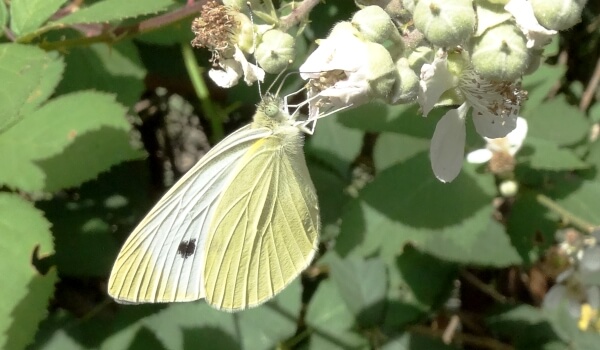
Photo: White cabbage
About 80 percent of the larvae die from the apanteles wasp - Apanteles glomeratus, which injects its eggs into them. This happens at a time when the caterpillars are still small. The larvae of the predator hatch inside the host's body and slowly devour it, but the cabbage continues to live and consume food. When the rider larvae grow, they eat the host's vital organs and kill it and burst through the skin.
Sometimes you can see the dry remains of the shell of a caterpillar on a cabbage leaf, surrounded by an accumulation of up to 80 tiny yellow fluffy cocoons. The following spring, riders emerge from their cocoons and fly in search of new caterpillars of the cabbage whitetail. Having found a potential prey, the female rider feels it with her antennae to estimate its size.
The size of the larva should be such that the offspring that will develop inside will have enough food. Too old an individual can turn into a pupa before the larvae of the parasite insect develop there. The riders pierce the prey with the ovipositor and release one egg there. The female can make several of these injections into one caterpillar.
Many pupae, when they have just formed and their covers are still soft, are attacked by the parasitoid wasp Pteromalus puparum. She lays her eggs there. Up to 200 predators can develop in one pupa. In three weeks, the larvae develop in the pupa of the cabbage. If this happens in the summer, then they come out of it as adult insects, in the autumn, they remain hibernating inside.
The cabbage whitefish does not have a specific group of predators. They are hunted by a wide range of different birds. They are eaten by some mammals, rarely by reptiles, one insectivorous plant.
They are potential food for some:
- hymenoptera;
- hemiptera;
- coleoptera;
- Diptera;
- arachnids.
Gyroporus castaneus (Bull .: Fr.) Quel.
Classification: Major Groups> Fungi, lichens and fungus-like organisms> Basidiomycota> Agaricomycetes> Boletales> Gyroporaceae> Gyroporus
| Russian name | Gyropor chestnut | |
| This post has been verified | Index Fungorum (2011-04-27) | |
| Synonyms and combinations | Cyroporus castaneus Giroporus castanensis (Bull .: Fr.) Qyel. | |
| Included in the red books | St. Petersburg. More ... Krasnodar Territory. More ... Primorsky Territory. More ... Rostov Region. Read more ... Jewish Autonomous Region.Read more ... Republic of Mari El. Read more ... Republic of Mordovia. More ... Nizhny Novgorod Region. More ... Saratov Region. More ... Republic of Tatarstan. More ... Chuvash Republic. More ... Pskov Region. More ... Belgorod Region. Read more ... Vladimir region. More ... Voronezh Region. More ... Kaluga Region. More ... Kursk Region. More ... Lipetsk Region. More ... Moscow region. More ... Ryazan Region. More ... Tver Region. More ... Tula region. More ... Yaroslavl Region. More details… Moscow. More ... Republic of Adygea. More ... Volgograd Region. More details ... | |
| Previously included in the red books | Khabarovsk region. More details ... | |
| Species marked in protected areas | Alania. More ... Bastak. More ... Bolshaya Kokshaga. Read more ... Golubinsky sandy massif. More ... Gryadina. More ... Kaluga Zaseki. Read more ... Kedrovaya Pad '. More ... Kolodetsky. More ... Kotelsky. Read more ... Lazovsky im. L.G. Kaplanov. More ... Lipetsk. More ... Meshchersky (Meshchersky). More ... Lower reaches of the river. Ivy. More ... Lake Pleshcheyevo. More ... Sebezhsky. More ... North Ossetian. More ... Yamansky. More details ... | |
| Images |
|
Security card
Regions in which the taxon is listed in the Red Data Book
PAs where the taxon is marked
| View revision history | |
| Spreading | In the RSFSR, it is found in the European part - in the Leningrad, Moscow, Belgorod, Penzenskaya regions and in the Tatar Autonomous Soviet Socialist Republic, in the North Caucasus, in the Krasnodar Territory and in the south of the Far East - in the Primorsky Territory (1-5). In the USSR, it was also noted in Estonia, Belarus, Ukraine and Moldova (6-9). It is known outside the USSR in Europe, Asia, and North America (10). |
| Lifestyle | Mycorrhizal fungus, but it can live without symbiosis with woody species. Prefers sandy and clayey soils. Inhabits deciduous, less often coniferous forests, on forest edges, sometimes on lawns, at a considerable distance from the edge of the forest. Fruiting in August - September. |
Cooking recipes
You shouldn't marinate this mushroom. There will be bitterness in the brine, which can spoil the taste of the entire dish. The same applies to the salting of chestnut trees.
Cleaning
Mushrooms brought from the forest must be processed as quickly as possible, since they quickly deteriorate. As a last resort, leave them in the refrigerator for a few hours before cleaning:
- Cut off the mycelium - the bottom of the leg.
- Clean the fruit body of dirt.
- Rinse the mushrooms well and soak for 20 minutes.
- After all the manipulations, chestnuts can be further processed.
Frying
Chestnut mushroom can be fried, but it should not be boiled, because in this form it will certainly give off bitterness.
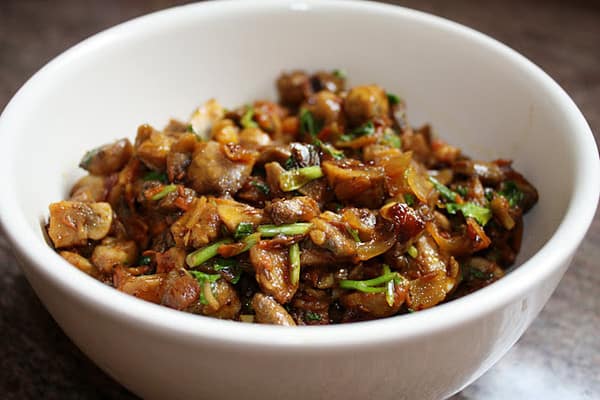
Preparation:
- Use washed mushrooms for frying.
- After boiling in salted water, place the product in a colander and let the liquid drain.
- Grease a preheated pan with oil and put the chopped fruit bodies on it.
- They will be fried for 10-15 minutes. You need to constantly stir the contents of the pan.
You can also fry chestnuts with vegetables. In this case, vegetables are fried first, and then mushrooms are added to the pan.
Drying
When dried, the chestnut tree loses its taste of bitterness, so it is subjected to just this type of processing.
Drying has several advantages:
- Mushrooms stay usable longer.
- They are more nutritious than pickled or salted ones.
- Nutritional benefits are preserved.
Drying preparation:
Cleanse the fruiting bodies thoroughly.
It is not recommended to wash the mushrooms before drying, it is enough to clean it from dirt and wipe it well.
You should choose undamaged specimens, which are cut into plates or cubes.
It is important to dry the fungi to the desired degree. If overdried, they will lose their taste and aroma.
Underdried - will not be stored for a long time, they will begin to mold and deteriorate. A quality product should bend easily, but not break.
To dry in the oven:
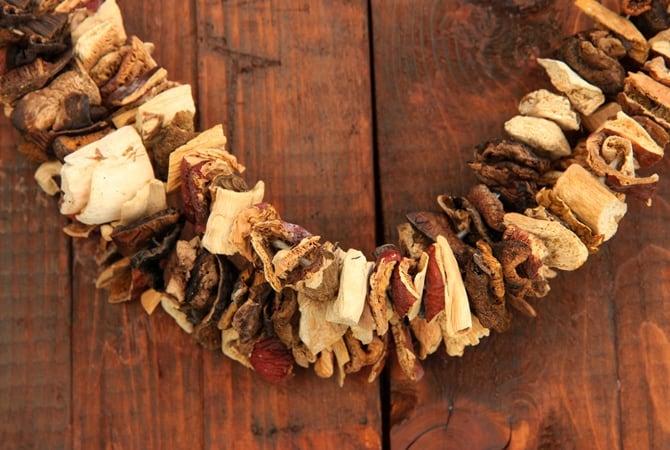
- Separate the legs from the hats.
- Cut into medium slices.
- Place on a wire rack, which must first be placed on a baking sheet.
- Heat the oven to 40-60 degrees.
- Open the oven door to evaporate excess moisture.
- Leave on for 48 hours.
Chestnuts can dry unevenly, so completely finished specimens should be removed from the oven in time.
Another drying method involves using a microwave:
- Peel and chop the mushrooms.
- Spread out on a plate, place in the microwave, setting the value to 100-180 W.
- After 15-20 minutes, open the microwave oven for airing, and then turn it on again for 15-20 minutes.
- The number of such repetitions depends on the thickness of the sliced mushrooms. On average, 4 stages of 20 minutes are enough.
You can also use the drying method known for a long time. Whole or coarsely chopped mushrooms are strung on a nylon thread. Suspended in rooms protected from rain. It is advisable to cover them with a cloth to avoid dust settling. During the drying process, chestnuts absorb all the surrounding odors, so you should choose well-ventilated rooms.
Preparation
Gyroporus is used to create various dishes, it is dried and frozen for the winter.
Cleaning
After collecting the mushrooms, they must be cleaned: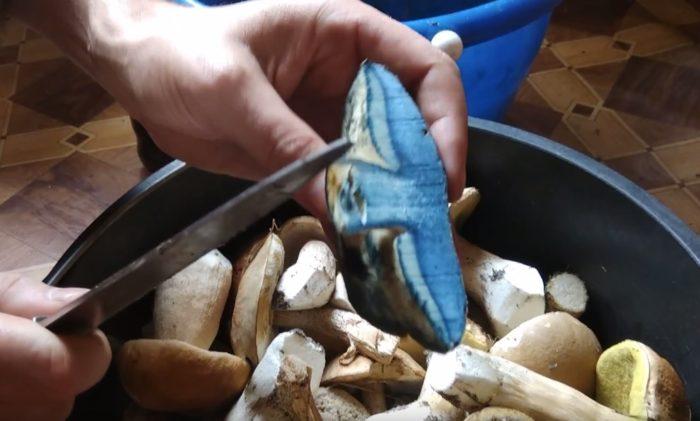
- Rinse the fruit in cool running water.
- Pry the skin with a knife and remove it.
- Cut the peeled mushrooms into pieces, remove the wormy ones.
How to boil properly:
- Blue gyroporus must be pretreated.
- Boil for 30-40 minutes.
Pickling
The mushroom can be pickled, you get a very tasty and easy-to-prepare snack. To marinate gyroporus you will need:
- 2 kg of mushrooms;
- 50 ml vinegar;
- 2 tbsp. l salt;
- 1-1.5 tbsp. l. Sahara;
- 0.5-1 tsp black peppercorns;
- 2-3 pcs. carnations;
- 1 tsp dill seeds;
- 3 cloves of garlic.
How to cook?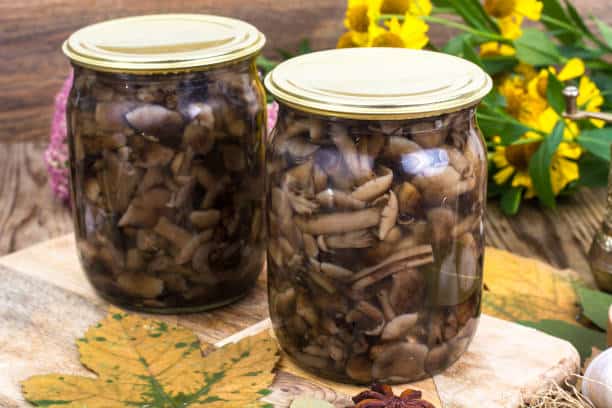
- Boil the forest fruits for 20 minutes.
- Place in jars.
- Add cloves, dill seeds.
- Pour in a hot marinade of mushroom broth, salt, garlic, pepper, sugar and vinegar.
Freezing
Freezing the mushroom allows you to use it at any time of the year, it is a very simple way to preserve the product. The advantage is that the mushrooms do not lose their taste and can be used to create various dishes.
Step by step cooking
- Clean the mushrooms from grass and dirt, wipe with a napkin.
- Cut into slices.
- Arrange in containers.
- Place in the freezer.
Frying
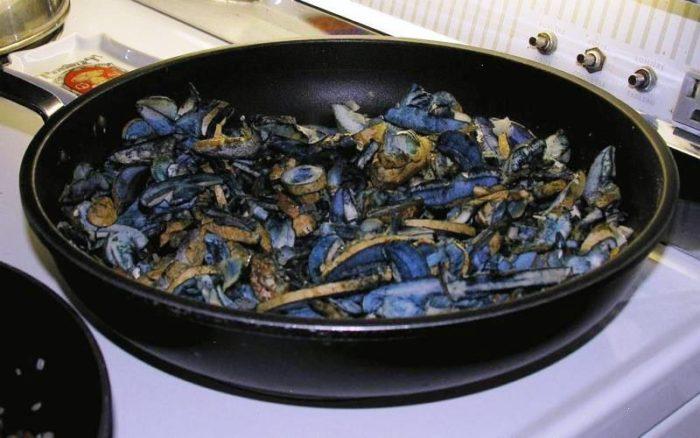
Fried dishes made from blue gyroporus are very tasty and easy to prepare. Here are some recipes:
- Fry 550 grams of mushrooms with onions in butter for 15 minutes, add 350 grams of cream and simmer over low heat until the sauce is reduced by half. Then add a pinch of ground pepper and herbs.
- Dip 150 grams of chopped mushrooms in a beaten egg, sprinkle with ground breadcrumbs and fry in vegetable oil until tender.
Salting
Salting the gyroporus is carried out according to the following scheme:
- Boil peeled fruits for 15 minutes in salted water.
- Divide into jars.
- Pour in salted brine with seasonings, citric acid can be added.
- Store in the refrigerator.
Drying
The most convenient and easiest way to dry is the oven: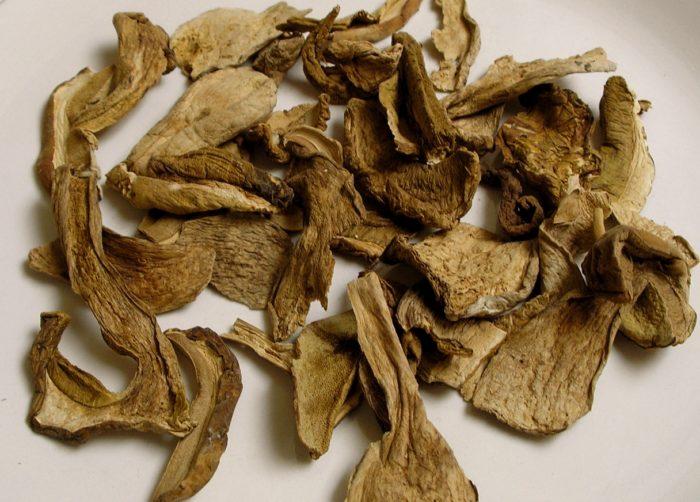
- Clean the mushrooms from leaves and dirt, wipe with a napkin.
- Cut large specimens into pieces.
- Place on a wire rack and place in the oven for about 3 hours (temperature - 60 degrees).
Canning for the winter
You will need:
- 1 kilogram of mushrooms;
- 1 tbsp. l. salt;
- 5 tbsp. l. vinegar 6%;
- 1 tbsp. l. Sahara;
- 6 peas of black pepper;
- 2 pcs. carnations;
- 3-4 dill umbrellas;
- 3 cloves of garlic.
Step by step cooking
- Sort out the mushrooms, peel, boil.
- Add salt, sugar and seasoning.
- Boil for 10 minutes, pour in vinegar.
- Arrange in jars, cover with marinade and roll up.
Similar species
This mushroom or chestnut gyroporus has several similar species, edible and non-edible.Edible includes blue gyroporus (Gyroporus cyanescens), and poisonous - bile (Tylopilus felleus).
Gyroporus blue
Listed in the Red Book of Russia, it is known under several more names: bruise, birch gyropore. Description:
- the cap has a characteristic bulge;
- the size of the upper part is from 6 cm to 16 cm in diameter;
- the color is light yellow or grayish, with a brown tint;
- the skin is dry and velvety to the touch;
- the leg can reach a height of 10 cm;
- inside the leg is hollow;
- the taste is pleasant, delicate, without bitterness.
At the break, the pulp has a characteristic blue or cornflower blue color, from which its name came. In young specimens, the leg is dense, thickened downwards, and with age it becomes hollow and fragile.
Creates mycorrhiza with birches and oaks. It develops well on sandy soils, in a temperate climatic zone, bears fruit from mid-July to late September.
Gall mushroom

Mushroom is inedible due to bitter taste
Bile is the inedible counterpart of the chestnut gyroporus. Belongs to the genus Tilopilus (Tylopilus) from the Boletovye family. Fruiting from July to October, on sandy, light soils, in coniferous or mixed forests.
Description:
- cap size up to 12-14 cm in diameter;
- the shape of the "hood" is convex;
- skin color from brown to brown;
- the flesh is white and soft;
- on the cut, the flesh turns pink;
- the leg grows up to 10 cm;
- base diameter up to 3.5 cm;
- the color of the leg is pale beige;
- the taste of the pulp is bitter.
The white tubules of the hymenophore of young bile fungi, as it develops, become pale pink, dirty with age. Their aroma is weak, not pronounced. It tastes like quinoa.
The mushroom is considered inedible precisely because of its disgusting taste. However, some mushroom pickers soak it in salt water and then cook it. Experts from a number of Western countries, on the contrary, are sure that the gall fungus is poisonous and there are toxins in its pulp (even in small quantities), which, being absorbed into the bloodstream after eating it or even simply touching it, cause disturbances in the liver. which ultimately can lead to cirrhosis of this organ.
Edibility
Chestnut is ranked among the edible mushrooms of the second flavor category. Its characteristic culinary feature is a more or less pronounced bitter aftertaste after boiling. Therefore, the fruiting bodies are either fried or dried, but on the territory of Russia, the collection and harvesting of this protected species is equated with poaching. Only long-eared forest dwellers freely eat chestnut gyroporus - not without reason it got the name "hare mushroom".
Edible chestnut mushrooms are extremely rare in domestic forests. It is better to leave a rare species intact and report the location of the find to the environmental service, which keeps records of such sites.
Description
Very often, novice mushroom pickers make the mistake of considering the chestnut as a porcini mushroom. But they have a significant difference - the leg of the chestnut giperus is brown and hollow inside, and the boletus is dull gray.

In the common people, this mushroom is called hare or sand mushroom. This is due to the fact that it likes to grow in places of coniferous-leafy trees, and is also a favorite food of hares.

In addition, the chestnut mushroom is confused with the conditionally edible poddubovik, which has the same generic affiliation as the chestnut tree, but a significant difference lies in the leg.
On the cut, the mushroom is a bruise (the common name for the blue giporus, poddubovik) has a cyanosis, in contrast to the chestnut tree.

It is also often confused with the Polish mushroom, which in its essence is a complete resemblance to the chestnut tree. They differ from each other in size: both the cap and the leg of the Polish mushroom are more impressive in size, and the color is paler.

The chestnut mushroom also has an inedible double - a semi-white or gall mushroom. They have an outward resemblance, and besides this, there is a bitter taste of the pulp.


The hat has a convex shape, less often flat, and reaches 8 centimeters in diameter.The color range is varied - from brown to light brown. The top layer of the cap of a young mushroom is velvety, sometimes fleecy.

As the mushroom matures, the cap becomes smooth. During a drought, the chestnut hat cracks from a lack of moisture. The tubes of the mushroom are white, but it is worth noting that they are yellow in mature mushrooms. There is no darkening on the cut, and if you squeeze them a little, then dark brown or brown spots form at this place.
The leg is cylindrical in shape, with a slight thickening at the bottom. The size of this seal is directly related to the amount of precipitation that fell while the mushroom was growing. Thickening variations from 4 to 8 centimeters.

The chestnut leg is very much like a hat in color, but slightly darker. When the mushroom is young, its filling resembles cotton wool, and when the mushroom ripens, it becomes hollow. Spores are oval, less often ellipsoidal and smooth. The color of the spores is from colorless to pale yellow.

When the chestnut mushroom is cut, the flesh does not change in color and remains white. The consistency of young mushrooms is hard and fleshy, and matures it becomes quite fragile. The smell and taste are specific, but poorly expressed.

This mushroom belongs to the second category of edible mushrooms, and is rarely common, which determines its value in the gastronomic sense. It is truly a delicious mushroom. These qualities are enhanced during heat treatment. That is why the chestnut mushroom gyroporus is most often dried.

Description
In Latin, the chestnut mushroom is called Gyroporus castaneus (chestnut gyroporus), and in the common people - Chestnut, hare or sand. It belongs to the Boletov family, a genus of tubular Gyroporus.
Hat
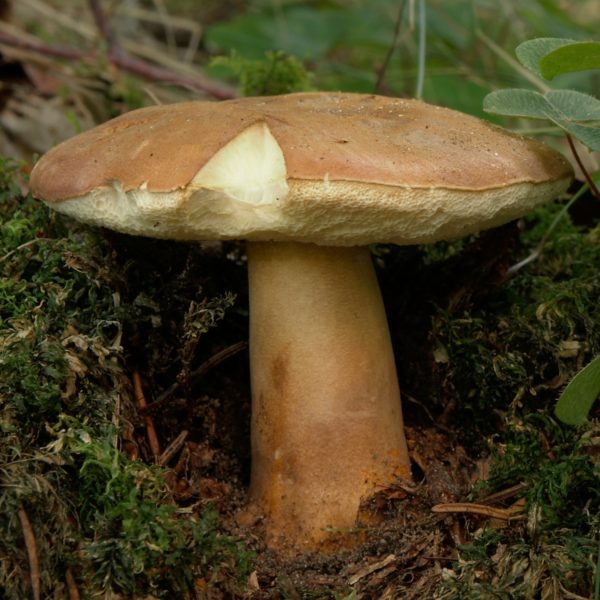
The color of the cap of a chestnut mushroom is rusty-brown, red-brown or chestnut-brown, in a young mushroom its shape is convex, as it grows, the cap becomes flat or cushion-shaped, with a diameter of 4 to 11 cm.The surface of the cap in young chestnut mushrooms is velvety or slightly fluffy, often becomes naked with age. During dry weather, the cap of the mushroom often cracks. The tubules are white, yellow in the old mushroom, do not change color on the cut, adherent at the stem, gradually become free, their length is up to 8 mm. The pores are small, rounded, at first white, then yellow; when pressed, brown spots remain.

The pulp is white, the color does not change at the break, the aroma is weak, mushroom, the taste resembles a hazelnut.
Leg
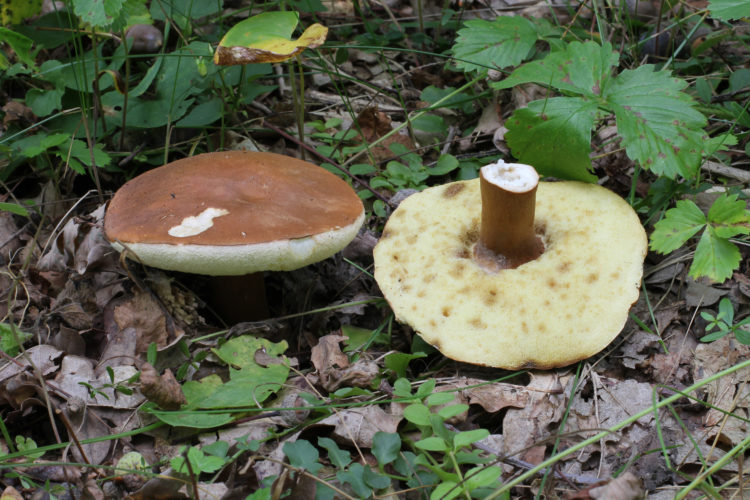
The leg is cylindrical, slightly thickened at the base, solid in a young mushroom, cavities appear in it with age. The color usually approaches the color of the cap, or lighter. Leg length 3.5-8 cm, diameter 0.8-3 cm.
The older the body, the less villi on its cap. It may crack at the edges if the summer is dry. The cut of the leg does not darken. The old chestnut mushroom has a hollow tubular stalk that is thickened towards the ground. Height depends on weather conditions, height is from 3 cm to 8 cm.
The pulp of the chestnut mushroom is characterized by fleshiness and white color. It is fragile in a young organism, and the old hare mushroom has a hard and dry flesh.
This rare forest organism, chestnut mushroom, is listed in the Red Book of Russia. It grows under broadleaf trees. Forms mycosis with beeches, oaks and conifers.
Growing at home and in the country
Growing forest mushrooms in the country is not very difficult. First of all, you need to choose a place just under the tree, as in the forest. In the case of a gyroporus, an oak or any other garden tree is great.
One of the main conditions for growing in the country is that the place should be shady and humid. If there are no trees at all, then you can find a shade near the gazebo, under the roof, the main thing is that grapes, rye, wheat, millet and other crops are not planted nearby.
It is not difficult to acquire mycelium, but you can also make it yourself. To do this, it is necessary to collect spores from the bruise, and this can be done from overripe fruits.The seeds must be mixed in a container or container with water (it is better to take it from the river or collect it after rain, so that the mushroom feels more comfortable at home). Add a few tablespoons of sugar. All this is mixed until a homogeneous mass is formed.

